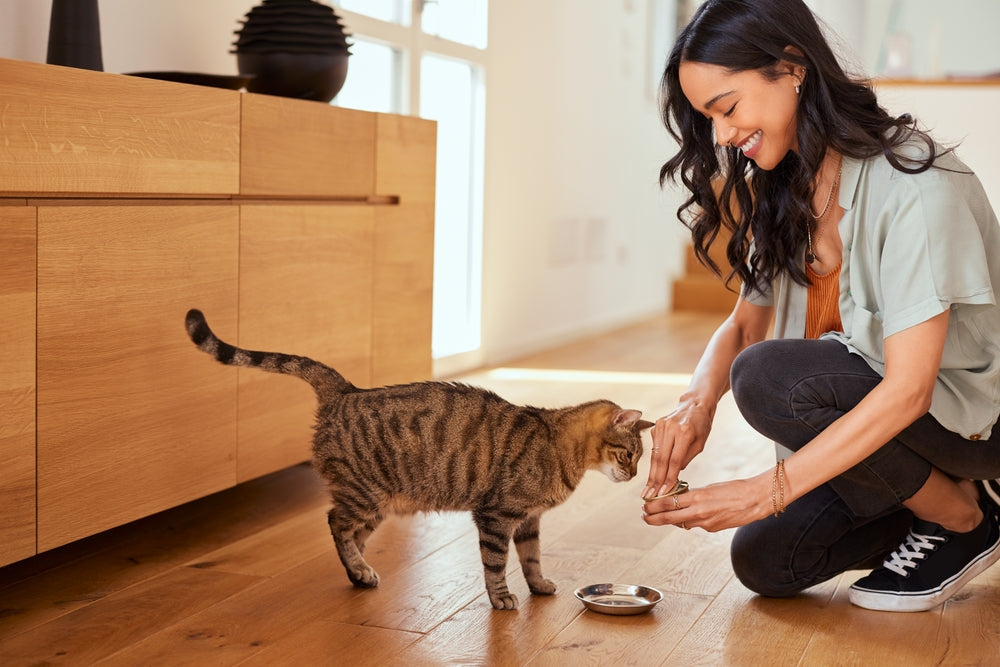
Cats are endlessly fascinating, and their tail movements can be a real mystery. Ever wonder why your cat wags their tail? Whether it’s a gentle sway or a quick flick, their tail is a window into how they’re feeling. By paying attention to this "tail talk," you can pick up on what your feline friend is trying to tell you. Let’s dive into what these tail movements mean and how to better understand your cat’s body language.
What Does It Mean When Cats Wag Their Tails?
Tail wagging in cats is much more complex than in dogs. While a dog’s wag usually signals happiness, a cat’s tail can communicate a wide range of emotions. So, what does it mean when cats wag their tail?
A slow, gentle swish often signals contentment or curiosity. You might notice this when your cat is calmly observing something or investigating a new environment. On the other hand, if your cat’s tail is lashing back and forth rapidly, this could indicate irritation or frustration. A thrashing tail might mean your cat is becoming overstimulated, and it’s best to give them space.
Cats can also use their tails to show they’re on high alert. A rapid twitching or swishing motion often signals focus or concentration—maybe your cat has spotted a bird outside or heard an unfamiliar sound. Additionally, many cat owners ask, why do cats arch their back when you pet them? This often happens when they’re feeling affectionate or stimulated, similar to how their tail flicks might indicate they’re processing different sensations.
Key Emotional Signals of Tail Movements
- Curiosity: A slow, controlled tail wag while investigating new surroundings.
- Irritation: Quick, sharp tail flicks often show that your cat is overstimulated or agitated.
- Focus or Alertness: Small twitches at the tip of the tail can indicate intense concentration on an object or sound.
- Friendly or Playful: Look for slow swishing paired with an upright, confident posture.
- Fearful or Stressed: A tucked tail and flattened ears signal fear or unease.
- Aggressive or Defensive: A puffed-up tail, along with growling or hissing, means it’s best to give your cat some space.
Why Do Cats Wag Their Tails While Lying Down?
It might seem strange to see your cat wagging its tail while lying down. This behavior usually means your cat is still aware of its surroundings, even in a resting state. For instance, subtle tail movements can be a response to a sound or a draft in the room, signaling that your cat is resting but not entirely asleep.
Cats also experience twitching tails during sleep, especially when dreaming. Like humans, cats enter REM sleep, where they might dream of chasing prey or playing, leading to slight tail movement. If you’ve ever noticed your cat’s tail wagging during a nap, this could simply be the result of a lively dream.
Creating a Comfortable Environment for Your Cat
Understanding your cat’s tail movements can help you create a more harmonious environment for them. Cats are sensitive to changes in their surroundings, and knowing when they’re feeling stressed or overstimulated gives you the opportunity to intervene and make them more comfortable.
Meeting your cat’s basic needs is important for their well-being. Ensuring a clean, low-stress litter box environment is key. With PrettyLitter’s color-changing technology, you can keep a close eye on your cat’s health and address potential issues before they escalate. Our health-monitoring litter not only keeps odors under control, but also offers peace of mind by monitoring your cat’s well-being.
Final Thoughts on Decoding Your Cat’s Tail Language
A cat’s tail can reveal a lot about their emotions, whether it’s contentment, curiosity, or frustration. Understanding why cats wag their tails helps you strengthen your bond with your feline friend and ensures you can respond appropriately to their needs. From subtle tail twitches while dreaming to more pronounced flicks of irritation, your cat is always communicating.
If you’re thinking of bringing home a new feline friend, it’s also helpful to review what to know before getting a cat. Recognizing their body language is just one part of being a well-prepared cat owner. And remember, PrettyLitter is here to help you provide the best care for your cat, from their health to their happiness.
Sources:
- ASPCA. Aggression in Cats. www.aspca.org/pet-care/cat-care/common-cat-behavior-issues/aggression-cats
- Found Animals Foundation. Recognize Unhappy Cat Behavior. www.foundanimals.org/recognize-unhappy-cat-behavior/
- The Humane Society. Cats Meow. www.humanesociety.org/resources/cats-meow
- The Pet Staff. Cat Twitching in Sleep. www.thepetstaff.com/cats/care/cat-twitching-in-sleep/


Follow Us